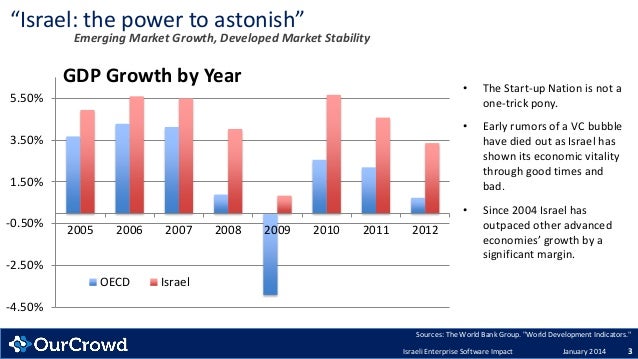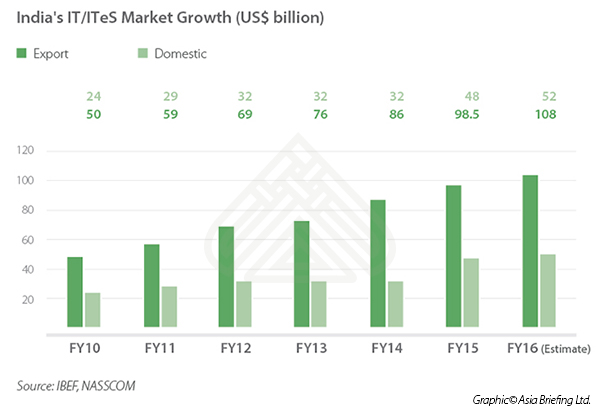
WASHINGTON--(BUSINESS WIRE)--Amid discussions about the slow pace of growth in the US economy, software’s economic impact is surging – adding $1.14 trillion overall, supporting more than 10 million jobs, and propelling the economy in all 50 states. These are among the key findings in “The Growing $1 Trillion Economic Impact of Software” – the first-ever report to track the growth of software’s impact on the US economy and demonstrate how software provides a powerful spark across the country.

Among the report’s key findings: Software’s direct economic impact grew by 18.7 percent in the past two years while the US economy grew 6.7 percent. In addition, the report shows how software jobs are surging across the country – with states like Kansas and Indiana outpacing all others.
Growth is the watchword of our annual technology outlook this year. Paul Sallomi, Deloittes global technology, media, and telecommunications leader and US and global technology sector leader, weighs in on what’s ahead for tech. Sep 26, 2017 The software industry represented just 3 percent of gross domestic product in 2016 but 7 percent of GDP growth from 2014 to 2016, according to U.S.
These results, and other important details highlighting the importance of the software industry can be found in the new report, the latest from Software.org: the BSA Foundation.
The report’s other key findings include:
- Software contributed more than $1.14 trillion to the total US value-added GDP in 2016 – a $70 billion increase in the past two years.
- Software is a powerful job creator. The industry directly employs 2.9 million people in the US and supports a total of 10.5 million US jobs through indirect and induced impacts. Those numbers are up 14 percent and 6.5 percent, respectively, since 2014. In comparison, US employment grew 3.9 percent from 2014 to 2016.
- Software drives growth in all 50 states. In 35 states, value-added GDP directly attributable to the software industry grew more than 20 percent in 2016 – with Idaho and North Carolina up more than 40 percent.
- Software industry employment is growing fastest in some unexpected places. Kansas, Mississippi, Indiana, Idaho, and Louisiana led the way in 2016, with direct software employment in Kansas and Indiana growing more than 30 percent.
- Growing software investments in innovation will continue to drive economic benefits. The software industry invested more than $63 billion in research and development (R&D) in 2013 (the latest year for which data was available), compared to $52 billion in 2012, representing a sizeable 21 percent increase.
This year’s report incorporates data and analysis from The Economist Intelligence Unit (EIU) and builds on a 2016 report that explored the state of the industry in 2014.
“This year’s report not only quantifies the breadth and depth of software’s impact, but also allows the first-ever comparison of how our industry is growing,” said Victoria Espinel, President of Software.org: the BSA Foundation and President and CEO of BSA | The Software Alliance. “These gains extend far beyond the software industry; they create a ripple effect that magnifies opportunities and job growth in every industry across the country.”
In addition to tracking software’s effect on the broader US economy, the report looks at state-by-state data. In each – regardless of how big or small, rural or urban – software innovation contributes a significant economic impact by boosting employment, lifting wages, and driving investments in local research and development.
Taken as a whole, Software.org hopes this study will help policymakers and thought leaders better understand the magnitude of the widespread benefits a thriving software industry delivers. At the state level, the data give leaders a better sense of the impact of their technology initiatives and help them focus more precisely on the pragmatic policy choices that advance software-enabled gains.
“The continued growth, vitality, and innovation of the software industry depends on policies that encourage continued innovation and investment,” said Chris Hopfensperger, Executive Director of Software.org: the BSA Foundation. “A thriving innovation ecosystem, in turn, will provide smarter opportunities for growing our economy, protecting the environment, boosting education, and improving public safety.”
To view Software.org’s full report, visit www.software.org/softwareimpact.
About Software.org
Software.org: the BSA Foundation is an independent and nonpartisan international research organization established to help people better understand the impact software has on our lives, our economy, and our society. Headquartered in Washington, DC, the foundation publishes studies that examine the intersection of software and society, and it engages with policymakers and the public to inform policies that can stay ahead of cutting-edge technologies. The foundation also works directly to empower the workforce of tomorrow by encouraging a diverse community of young coders and working to increase opportunities for training and skills. Follow Software.org at @BSA_Foundation.
The software industry includes businesses for development, maintenance and publication of software that are using different business models, mainly either 'license/maintenance based' (on-premises) or 'Cloud based' (such as SaaS, PaaS, IaaS, MaaS, AaaS, etc.). The industry also includes software services, such as training, documentation, consulting and data recovery .
History[edit]
The word 'software' was coined as a prank as early as 1953, but did not appear in print until the 1960s.[1] Before this time, computers were programmed either by customers, or the few commercial computer vendors of the time, such as UNIVAC and IBM. The first company founded to provide software products and services was Computer Usage Company in 1955.[2]
The software industry expanded in the early 1960s, almost immediately after computers were first sold in mass-produced quantities. Universities, government, and business customers created a demand for software. Many of these programs were written in-house by full-time staff programmers. Some were distributed freely between users of a particular machine for no charge. Others were done on a commercial basis, and other firms such as Computer Sciences Corporation (founded in 1959) started to grow. Other influential or typical software companies begun in the early 1960s included Advanced Computer Techniques, Automatic Data Processing, Applied Data Research, and Informatics General.[3][4] The computer/hardware makers started bundling operating systems, systems software and programming environments with their machines.
When Digital Equipment Corporation (DEC) brought a relatively low-priced microcomputer to market, it brought computing within the reach of many more companies and universities worldwide, and it spawned great innovation in terms of new, powerful programming languages and methodologies. New software was built for microcomputers, so other manufacturers including IBM, followed DEC's example quickly, resulting in the IBM AS/400 amongst others.
The industry expanded greatly with the rise of the personal computer ('PC') in the mid-1970s, which brought desktop computing to the office worker for the first time. In the following years, it also created a growing market for games, applications, and utilities. DOS, Microsoft's first operating system product, was the dominant operating system at the time.
In the early years of the 21st century, another successful business model has arisen for hosted software, called software-as-a-service, or SaaS; this was at least the third time[citation needed] this model had been attempted. From the point of view of producers of some proprietary software, SaaS reduces the concerns about unauthorized copying, since it can only be accessed through the Web, and by definition no client software is loaded onto the end user's PC.
Size of the industry[edit]
According to industry analyst Gartner, the size of the worldwide software industry in 2013 was US$407.3 billion, an increase of 4.8% over 2012. As in past years, the largest four software vendors were Microsoft, Oracle Corporation, IBM, and SAP respectively.[5]
Mergers and acquisitions[edit]
The software industry has been subject to a high degree of consolidation over the past couple of decades. Between 1995 and 2018 around 37,039 mergers and acquisitions have been announced with a total known value of US$ 1,166 bil. USD.[6] The highest number and value of deals was set in 2000 during the high times of the dot-com bubble with 2,674 transactions valued at 105. bil. USD. In 2017, 2,547 deals were announced valued at $111 billion. Approaches to successfully acquire and integrate software companies are available. [7]
Business models within the software industry[edit]
Business models of software companies have been widely discussed.[8][9]Network effects in software ecosystems, networks of companies, and their customers are an important element in the strategy of software companies.[10]
See also[edit]
References[edit]
- ^Paul Niquette (1995). 'Softword: Provenance for the Word 'Software''. adapted from Sophisticated: The MagazineISBN1-58922-233-4
- ^Elmer C. Kubie (Summer 1994). 'Recollections of the first software company'. Annals of the History of Computing. IEEE Computer Society. 16 (2): 65–71. doi:10.1109/85.279238.
- ^Campbell-Kelly, Martin (2003). From Airline Reservations to Sonic the Hedgehog: A History of the Software Industry. Cambridge, Massachusetts: MIT Press. p. 57.
- ^Fishman, Katharine Davis (1981). The Computer Establishment (paperback 1982). New York: McGraw-Hill Book Company. p. 268.
- ^'Gartner Says Worldwide Software Market Grew 4.8 Percent in 2013'.
- ^'M&A by Industries - Institute for Mergers, Acquisitions and Alliances (IMAA)'. Institute for Mergers, Acquisitions and Alliances (IMAA). Retrieved 2018-02-28.
- ^Popp, Karl Michael (2013). Mergers and Acquisitions in the Software Industry - foundations of due diligence. Norderstedt: Books on demand. ISBN978-3-7322-4381-5.
- ^Karl M. Popp and Ralf Meyer (2010). Profit from Software Ecosystems: Business Models, Ecosystems and Partnerships in the Software Industry. Norderstedt, Germany: BOD. ISBN3-8391-6983-6.
- ^Cusumano M. (2003) Finding Your balance in the Products and Service Debate, Communications of the ACM. Vol. 46:3
- ^Software Ecosystem: Understanding an Indispensable Technology and Industry. Cambridge, MA, USA: MIT Press. 2003. ISBN0-262-13432-2.
External links[edit]
Software Industry Growth Ireland
| Look up software industry in Wiktionary, the free dictionary. |
- 'Software Industry'. Words to Avoid (or Use with Care) Because They Are Loaded or Confusing. Free Software Foundation. 2012-11-20. Retrieved 2013-01-31.